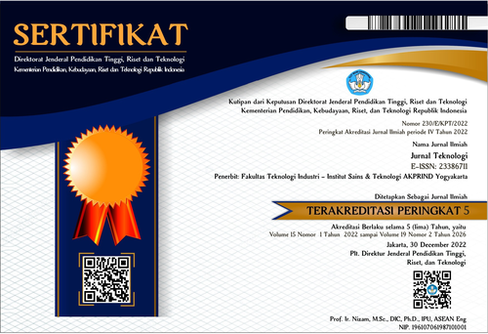NEW APPROACHING OF Thx DSrU1.7 NANO-MATERIALS ON ABRIKOSOV-BALSEIRO-RUSSELL (ABR) MODEL AT 485 TESLA GYRO-ACCELERATOR FOR ENVIRONMENTALLY FRIENDLY REACTOR TECHNOLOGY
DOI:
https://doi.org/10.3415/jurtek.v11i2.1395Keywords:
photon pairs, ABR formalism, Thx DSrU1.7 nano materials, 485 tesla, gyro-acceleratorAbstract
Our research present a source of correlated photon pairs in Abrikosov-Balseiro-Russell (ABR) formalism that relies on spontaneous scattering in ThxDSrUO nano structure. Quantum correlations are shown between photon pairs that are generated through four-photon scattering where the pump photons are degenerate at a wavelength of 822.78 nm with 2.63 x 105 currie/mm fast thermal neutron floating, and the signal also idler photons are non degenerated at wavelength of 766.45 nm and 769.53 nm, respectively. In non-Abellian system for ABR formalism, the quantum approaching will be shown Cerenkov’s effect existing, then the Betha Group Large Hadron Collider (LHC) CERN, France nuclear reactor using by ThxDSrU1.7 nano materials matrix to be barrier for 2.63 x 105 currie/mm fast thermal neutron floating before the anti-neutrino particle shown up at 485 tesla particullary. Careful adjustment of the pump wavelength and polarization in Dirac’s condition are shown to be critical to observing quantum correlations on gyro-accelerator for environmentally friendly reactor technology.
Downloads
References
Li B.A., Chen L.W. Modern Phys. Lett. A, 30 (2015), p. 1530010
Baldo M., Burgio G.F., Schulze H.J., Taranto G. Phys. Rev. C, 89 (2014), p. 048801
Li X.H., Guo W.J., Li B.A., Chen L.W., Fattoyev F.J., Newton W.G. Phys. Lett. B, 743 (2015), p. 408
M Hardiyanto, AIP Conference Proceedings, 1977 (2018), p. 030002
Ryckebusch J., Vanhalst M., Cosyn W. J. Phys. G, 42 (2015), p. 055104
Holt J.W., Kaiser N., Miller G.A. Phys. Rev. C, 93 (2016), p. 064603
Müther H., Sammarruca F., Ma Z.Y. Internat. J. Modern Phys. E, 26 (2017), p. 173001
Baldo M., Robledo L.M., Schuck P., Vinas X. Phys. Rev. C, 95 (2017), p. 014318
Downloads
Published
How to Cite
Issue
Section
License
Jurnal Teknologi provides immediate open access to its content in order of making research freely available to the public to support a global exchange of knowledge. All articles published in this journal are free for everyone to read and download, under licence CC BY SA.
Benefits of open access for the author, include:
- Free access for all users worldwide.
- Authors retain copyright to their work.
- Increased visibility and readership.
- No spatial constraints.




















